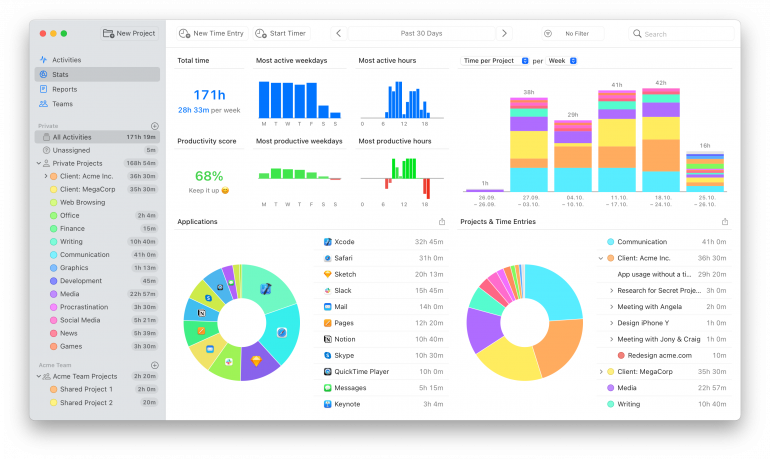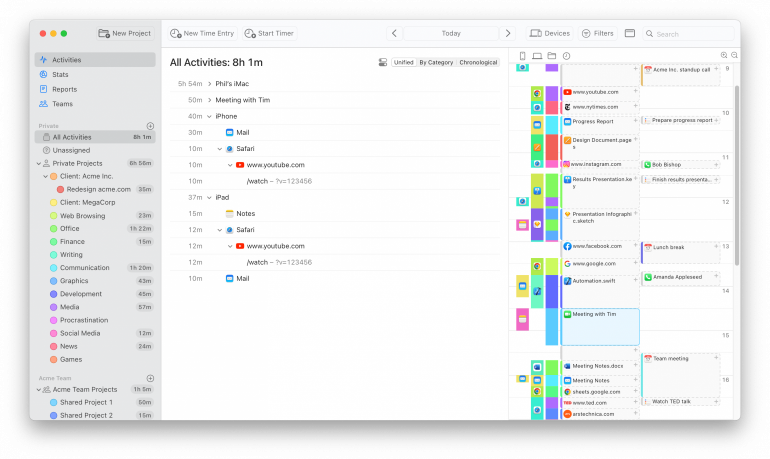Why Is It Important to Set Realistic Goals? Top 6 Benefits and Tips for Success

Image: Generated with Dall-E
Setting work goals can help to give you clarity and focus, boost your motivation, and increase your chances of achieving your professional ambitions. But be careful, we’re often warned, you have to make sure your goals are realistic. Why? Why is it important to set realistic goals? What are the benefits? Can’t we just aim for the stars and hope for the best?
In the minutes after midnight on 1 January every year, millions of people set goals for themselves. Within the first six months, according to recent research, 93.5% have failed in their attempts. The majority have given up before the end of February.
The reasons why we fail are numerous and complex. In some instances, we haven’t adequately prepared ourselves. We don’t really know what pursuing our goals involves or what will be required for us to succeed. In other instances, we encounter unanticipated external challenges. We fall ill, the economy changes, a pandemic hits. But among the most important reasons is that our goals simply aren’t realistic in the first place.
Here, we look into six benefits you can expect if you set realistic goals, and offer tips for making your goals a reality.
Let’s get started.
Table of Contents
What are Realistic Goals?
First things first, what are realistic goals? How do they differ from other goals you might set yourself? What distinguishes them?
Realistic goals are objectives that you are likely to achieve within the parameters you set for yourself. They’re neither too easy nor too difficult, striking a balance between feasibility and ambition. They don’t exceed your capabilities or depend on false or lofty expectations, and they consider any obstacles that might lie in your way. Your goals are likely to be realistic if they adhere to the SMART criteria, an acronym that stands for:
- Specific: A specific goal has a clear objective. It tells you exactly what you hope to achieve and how.
- Measurable: A measurable goal indicates a point of success or failure. This usually involves a number, but not always.
- Achievable: An achievable goal is something you can accomplish. It should be big enough to challenge you but not impossible.
- Relevant: A relevant goal matters to you and your career. If it isn’t relevant, you won’t be motivated to work towards it.
- Time-bound: A time-bound goal has a clear deadline to motivate you. If the goal lacks a deadline, it’s easy to put it off for another day.
You might also want to consider your skills, knowledge and abilities, the resources you have at your disposal, and any circumstances or constraints that might limit you. Make sure your goals are sufficiently flexible so that you can adjust to unexpected changes.
Examples of Realistic Goals
Here are some examples of SMART, realistic goals that might apply to you if you’re a freelancer or manage a team of people:
- Increase your monthly revenue by X% within six months
- Launch a new product or service by a specific date
- Improve customer satisfaction rates by X within the next year
- Develop and implement a marketing strategy to increase your brand’s visibility during the next quarter
- Attend X networking events or industry conferences by X date to expand your professional connections
- Enhance your skills and knowledge through X hours of training within in the next six months
Looking for more examples? We have 17 Examples of Work Goals That Will Boost Your Career right here.
If your goals still feel a little broad, remember to break them down into micro-goals. These little goals are small, easier to achieve, and take place over shorter time frames. Each one is a win that helps you stay on track and brings you closer to your bigger macro-goals.

Image: olia danilevich
How Realistic Goals Affect Freelancers and Teams
If you want to be a successful freelancer or team manager, it’s essential to set effective goals. Goals are the foundation of your plans, the guardrails of your work, and the barometers of your success.
If your goals aren’t realistic, they’re likely to hinder rather than help your progress. While a bold goal can feel exciting initially — ”I want to acquire 100 new clients by the end of the quarter!” — you might quickly find that you’ve overshot the mark. And as time passes and your goal feels further and further out of reach, your motivation could start to wane. Unrealistic goal setting isn’t only dangerous because it increases your chances of failure, but because it damages your faith in goal-setting itself.
If, however, you create realistic goals that are within reach, you’re likely to find that you:
- Feel confident, empowered and motivated to keep growing your business
- Develop stronger and more long-lasting client relationships
- Manage your time better by limiting your distractions and improving your focus and productivity
Help your team manage their workloads, while also improving communication and enhancing project management.
A Word on Time Management
The ways in which realistic goal setting depends on and influences effective time management is especially important. If you’re going to set realistic goals, you need to know how much time you have at your disposal. This means you have to start by understanding how you’re currently using your time. And the only way to know this for sure is to use an automatic time tracking tool like Timing.
Timing runs in the background while you work, taking note of every website, app and document you use without you having to lift a finger or start a timer. The Stats tab provides detailed information on the hours you spend at your desk. (And away from your desk, too — you can add tasks manually for offline activities.) In this way, it helps you to see exactly where your time is going, including when you’re getting distracted and for how long.

Use this information to inform your goal-setting process. Which clients are you working on the most? Do you want these clients to continue to be a priority or would you prefer to diversify your client base? Are you working efficiently, or do you need to boost your focus and productivity? These insights can be enormously valuable when you set your goals.
Pay attention if your Stats tab shows that you’re spending a lot of time browsing news sites or social media. While work breaks are important, it’s worth evaluating whether you could be spending some of that time pursuing your goals.
If you manage a team, Timing’s teams functionality helps you track time across various people. This can help you adjust your project management process to ensure everyone in your team is working well and consistently, while contributing to the goals you have set and maintaining a good work-life balance.
It is important to note that Timing lets you create any number of projects. It imposes no limits on how many you choose to create, no matter which plan you are on. This makes it easy to add to your client and project list as your business grows.
Why Is It Important to Set Realistic Goals? 6 Benefits
Setting realistic goals offers a number of tangible benefits. Let’s go through them one at a time.
1. Boosts Focus and Commitment
By laying out a roadmap for the journey ahead, realistic goals provide freelancers and teams with a clear direction and purpose. If you know what you’re working towards, you’re much more likely to avoid time sinks and dedicate yourself to fulfilling your objectives. This improved focus and clarity can boost productivity and efficiency, too.
2. Nurtures Motivation, Confidence and Self-esteem
Unlike unrealistic goals which tend to sap us of energy and motivation, achievable goals are inspiring. And with every micro (and macro!) goal achieved, you and your team are likely to feel your confidence and self-esteem grow. The benefits of this not only affects your goals, but your overall investment in your business and team morale.
3. Improves Time Management
Setting realistic goals requires careful planning and organization. To achieve them, you and your team need to manage your time effectively. By allocating hours, projects and resources efficiently, you’re likely to maximize productivity and meet your deadlines more consistently — including those you’ve set for your goals.
In Timing, you can set your goals up as their own project, and establish a rule so that all work related to that goal is automatically categorized. This will help you keep track of your general work-related activities, but also your goals.

4. Opens Your Business Up to New Opportunities
Working towards your goals is an iterative and evolving process. It requires you to think creatively, solve problems well and quickly, and make important, high-impact decisions. This way of working can make you more aware of and open to new opportunities. Can you increase your geographic footprint now that you’ve met your new revenue target? Have you found a new knack for mentoring? Are there technical solutions that could help you work better and faster?
5. Reduces stress
When you set achievable objectives, it helps you hone your attention on what really matters. And as you become focused and clear-headed, you reduce your levels of stress. Breaking down large goals into smaller, manageable tasks is also important here. Achieving your micro-goals helps your confidence to grow and your anxiety to subside.
6. Ramps Up Your Chances of Success
Perhaps most importantly of all, setting — and consistently working towards — realistic deadlines increases the chances of you achieving your vision. As you incrementally tick off the goals on your list, you’re likely to find that your efforts are reflected in your growing work satisfaction, team morale, and bottom line. Succeed in your goals and watch your business flourish.
Tips to Setting Realistic Goals
So how do you go about setting realistic goals? These tips are here to help you.
1. Start Setting Goals Right Now
If you haven’t established any goals, start straight away. Don’t wait until the end of your current project or the end of the year. It’s okay if you can only think of short-term goals for now. The sooner you start setting goals, the sooner you’ll reap the rewards.
2. Understand How You Spend Your Time
Your goals are inseparable from your time. How you’re currently spending your time can help you to identify blindspots and missed opportunities in your work processes. These should inform your goals. And how you choose to spend your time in the future can determine how likely you are to make your goals a success. You might want to try time blocking a few hours every week to your goals, so that they don’t slip off your list of priorities.
3. Build and Maintain Your Habit
It takes 66 days to build a habit. Try and get as much practice as possible as you make goal-setting part of your life. Set micro-goals for yourself, such as, “I will clear my inbox by 10am”. This will help you learn to think about your work in terms of realistic goals, and to get used to achieving them.
Read more: Optimize Your Life Using the Science Behind Building Habits
4. Avoid Activities That Don’t Fit Within Your Goals
If you designed your goals well, they deserve your attention. Do your best to weed out anything that doesn’t serve them. Admittedly, it can be hard to say no, especially if work and income is at stake. But try to be selective about what you take on board.
5. Focus on What You Can Control
While we can influence other people and events, we can’t control them. Setting a goal to appear on 10 podcasts as a guest is unrealistic — you simply can’t force a podcast to invite you onto their show. That isn’t something you can control. However, you can set the goal to approach 10 podcasts with a strong motivation to bring you on as a guest. That goal is more realistic.
6. Share Your Goals With a Friend
You’ll increase the likelihood of achieving your goals by sharing them with someone close to you. Ideally, choose someone who understands your work, and is a freelancer or small business owner themselves. Share your goals openly, document your progress, and talk through the challenges you encounter and the successes you achieve. It’s all about accountability here.

Image: Alexander Suhorucov
7. Track and Analyze Your Goals
Keep a record of your progress. You don’t need to keep detailed notes, just something to help you remember your milestones and achievements. Set aside some time every quarter to assess where you’re at. If you’re underperforming in certain goals, ask yourself why. Are they realistic? Have you set aside enough time? What adjustments do you need to make? Your Timing reports can be helpful here; they’ll tell you exactly where your time is going.
8. Reward Yourself for Your Successes
Many of us find it difficult to stay motivated on work tasks unless the benefit is close at hand. Tomorrow’s deadline is easy to focus on, but this year’s revenue goal is too distant and too abstract to deserve our attention. An easy and effective way to keep you on track is to set up a reward system for achieving your goals. Find something you like and use it to motivate you.
In Summary
If you want to be successful, you have to start thinking about the future today. Use goal-setting to map out your plans and drive your growth. And make sure that they’re realistic, so that you have a higher chance of reaching them and reaping the many rewards they provide.
Start by taking a concerted look at how you’re spending your time with Timing. Identify gaps and opportunities to use your time more efficiently so that you know where your hours are going. And reconfigure your schedule so that there’s always time for your goals. Download Timing’s free 30-day trial today to set your business up for success.
Why Is It Important to Set Realistic Goals? Frequently Asked Questions
What Are Realistic Goals?
Realistic goals are objectives that you are likely to achieve within the parameters you set for yourself. They’re neither too easy nor too difficult. They don’t exceed your capabilities. And they don’t depend on false or lofty expectations. Here are 17 examples of good work goals.
Why Is It Important to Set Realistic Goals?
You’re much more likely to achieve your goals if they’re realistic. Realistic goals also help to boost your focus, improve your time management, reduce stress, and ramp up your chances of success. If your goals are unrealistic, you’re less likely to feel motivated to pursue them.
How Do I Set Realistic Goals?
Take the time to consider your priorities and values. Then, use the SMART criteria to make sure your goals are specific, measurable, achievable, relevant and time-bound. Track your time so that you know how efficiently you’re working and ensure your schedule allows you to achieve your goals. Work on your goals consistently, and remember to assess your progress regularly by creating a project or task-specific report.
What Tools or Techniques Can Help in Setting Realistic Goals?
Having a firm handle on how you’re spending your time is critical in your goal-setting process. Use an automatic time tracking tool like Timing to evaluate your current schedule and to make space for your goals.
